The Ahrefs blog currently receives about 452,000 visits from search each month.

It wasn’t always like this. Just four years ago, we were following then-current blogging best practices (publish every day!) and plateauing at ~5,000 organic visitors a month.
Frustrated, we decided to switch things up. Fortunately, it worked like gangbusters.
In today’s post, I’ll share the tactics that have helped us achieve this tremendous growth. In short, you can be assured they have been proven to work.
Let’s get to it.
%(tableofcontents)
Click Here to Get the Blog SEO Checklist Today
1. Target Topics With Search Traffic Potential
When creating new content, most bloggers write about what excites them right now. This could be a comment on the latest news or a niche-related trending topic.
But there are two problems here.
First, if you’re just starting out, no one cares about your opinions. It’s harsh, but it’s true. People want to hear from authoritative bloggers — people who have expertise or an established audience.
Instead of talking about yourself, you should talk about what your audience is interested in.
Second, these topics have short shelf lives. When you first publish them and share it with your network, they might get a lot of traffic (“spike of hope”).
But they don’t have staying potential.
Once the hot-button topic dies off, interest wanes, and no one visits your article anymore. This results in a “flatline of nope.”[*]

When that happens, your blog doesn’t grow. You have to publish constantly to sustain the traffic. Once you stop, your traffic goes away.
You end up on the hamster wheel of content.
The solution? Make it so your articles rank on Google. For as long as your article ranks in Google for relevant search queries, you’ll receive passive, organic search traffic.
For example, look at the search traffic growth of Sumo’s blog:
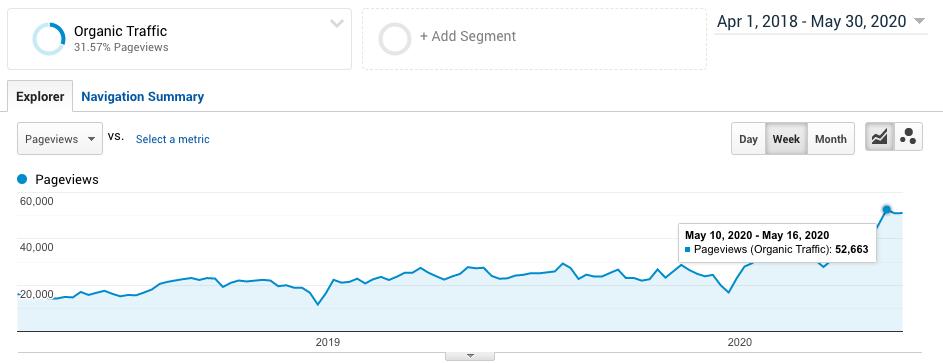
The team could take a short break, and traffic would likely continue to grow.
How, then, do you do this?
Well, to get traffic from Google, you need to target topics people are searching for. There are two ways to find what these topics are:
USE A KEYWORD RESEARCH TOOL
The easiest way to begin is to use a keyword research tool. Enter any relevant word or phrase into these tools, and they’ll suggest more ideas for you.
There are plenty of such free tools out there; do a Google search and take your pick. I recommend Answer The Public and Ahrefs’ free Keyword Generator.
Answer The Public is great for uncovering questions people are searching for in Google.
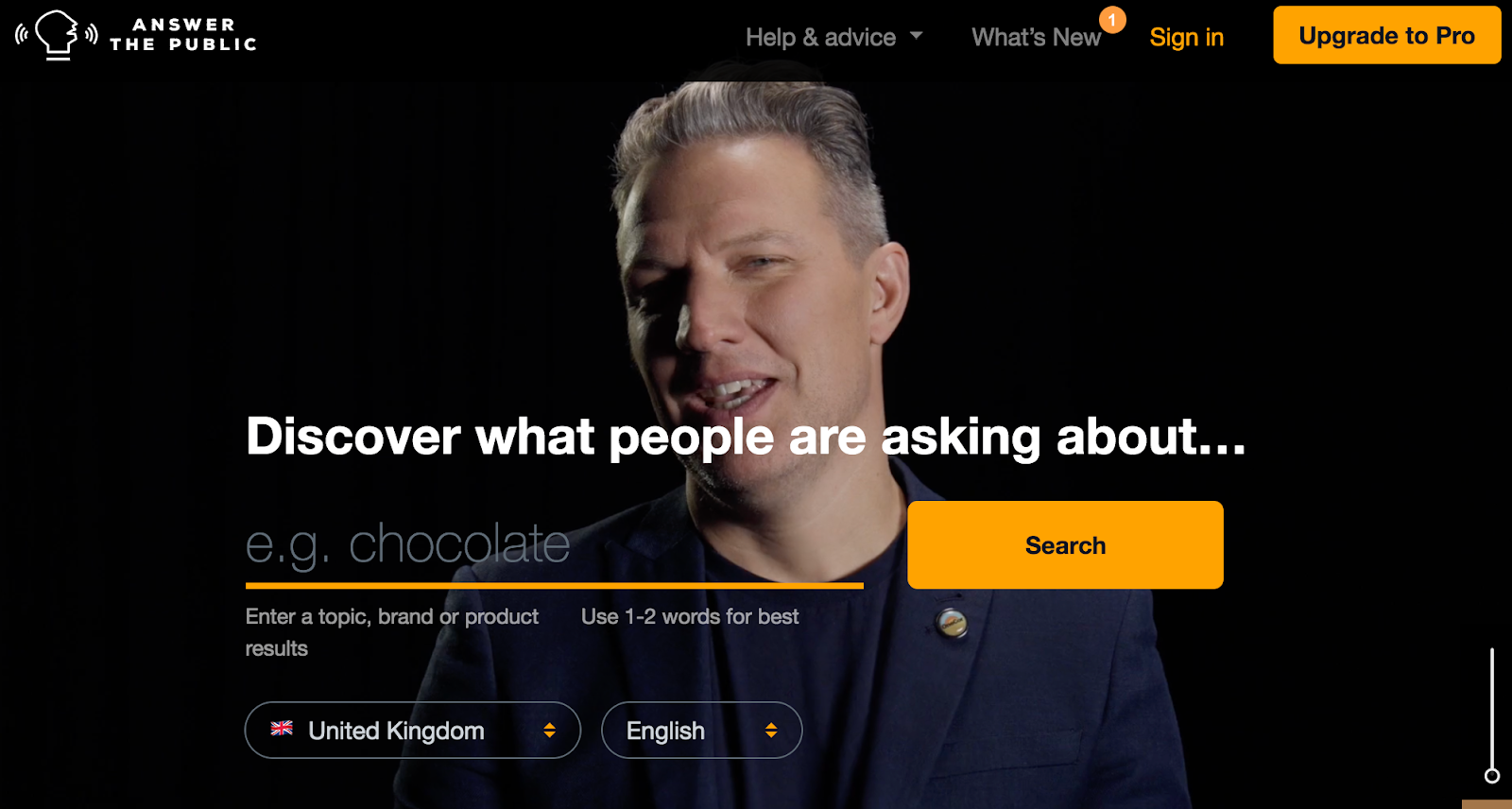
Simply enter any word or phrase (e.g., “tea”).
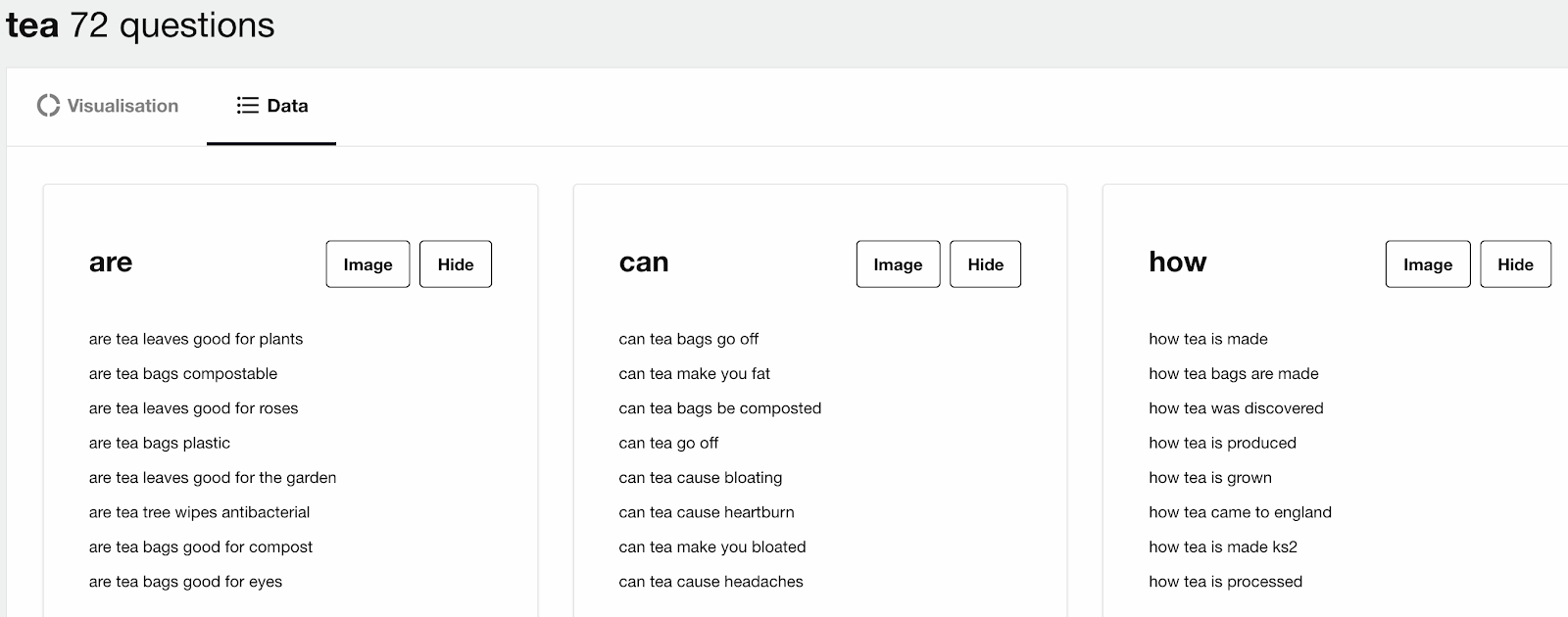
However, there is a problem. While Answer The Public does suggest many ideas, it’s missing a significant set of data — search volume. Without this data, you can’t figure out the popularity of these topics.
The topic you’re targeting could have 100,000 monthly searches — or none at all. You can’t tell.
To fix this, complement Answer The Public with the free Keyword Surfer extension tool. This tool adds search volume data to your Google search. Note the keywords you wish to target in Answer The Public and check them one by one using Keyword Surfer.

The other tool you can use is Ahrefs’ Keyword Generator.

Our free keyword tool shows you the top 100 keywords, top 50 related questions, and search volumes.

As you progress in your blogging journey, you’ll start to demand more ideas and more data for analysis. This is when you can move on to paid SEO tools like Ahrefs or Moz.
LOOK AT WHAT YOUR COMPETITORS ARE RANKING FOR
Another way to find keywords with search traffic potential is to look at what your competitors are already ranking for. After all, if they’re getting search traffic, you can be sure that you can acquire that traffic too — if you outrank them.
How do you find these topics?
The easy but non-scientific way is to check your competitors’ blogs. Typically, they’ll show off their most popular posts in a sidebar like this:

Figure out what topic they’re trying to target by looking at their titles and URLs.

Then, use Keyword Surfer to see if there’s search potential.

The problem: this is a laborious process. You have to check one by one, and you have no idea how they ranked those blog posts. Social shares? Their personal favorites?
A better (but paid) way is to enter your competitor's domain into Ahrefs and go to the Top Pages report. It’ll show you the pages that are sending your competitors the most search traffic.
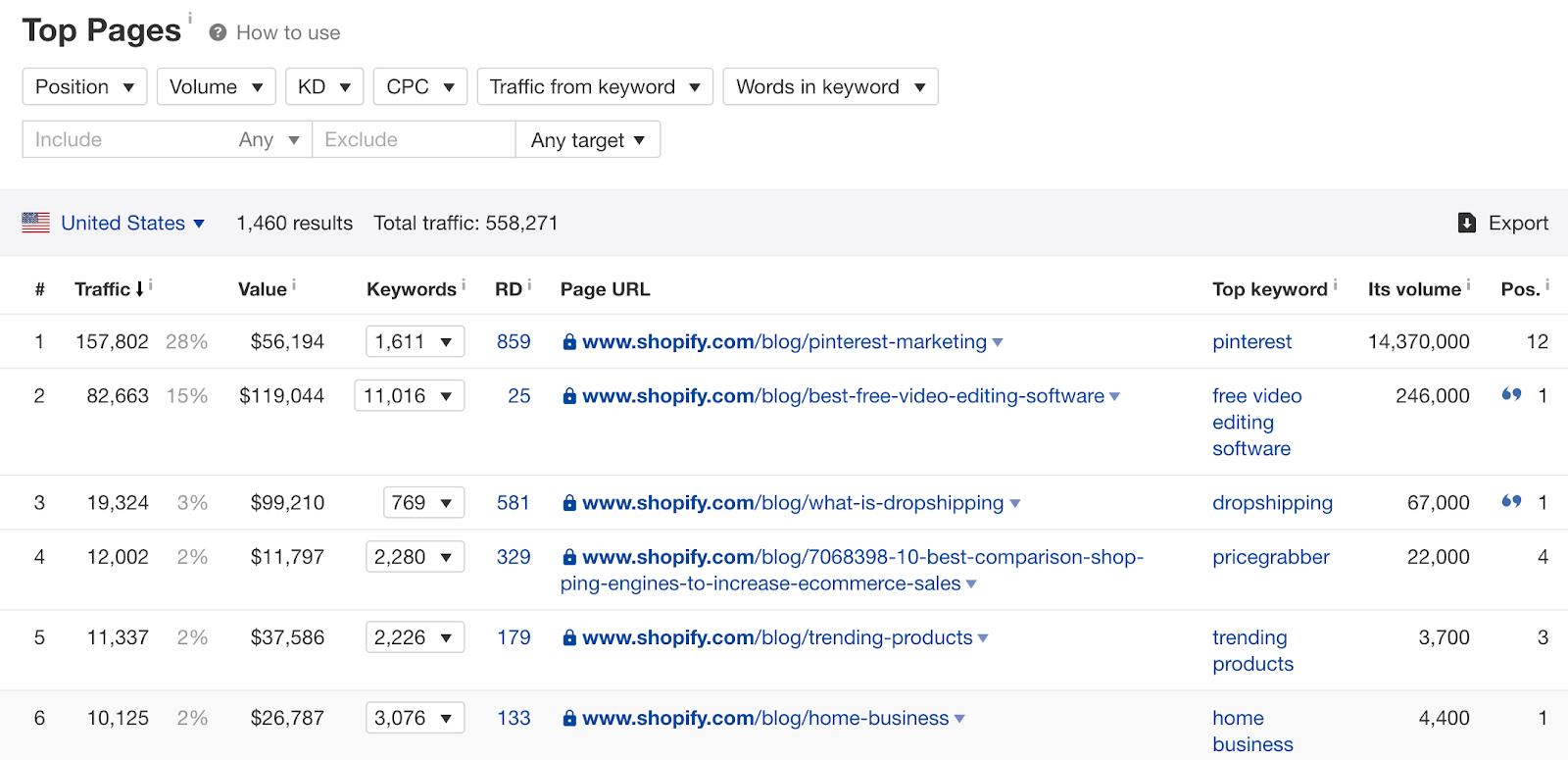
Eyeball the report and choose relevant topics you wish to target.
2. Match Search Intent
Google’s goal is to show the most relevant result. So it has to figure out why a searcher is searching, i.e., search intent.
To rank, you have to align your content in the same way.
Here’s an example. The query “basketball shoes” has tons of search volume a month (according to Ahrefs).
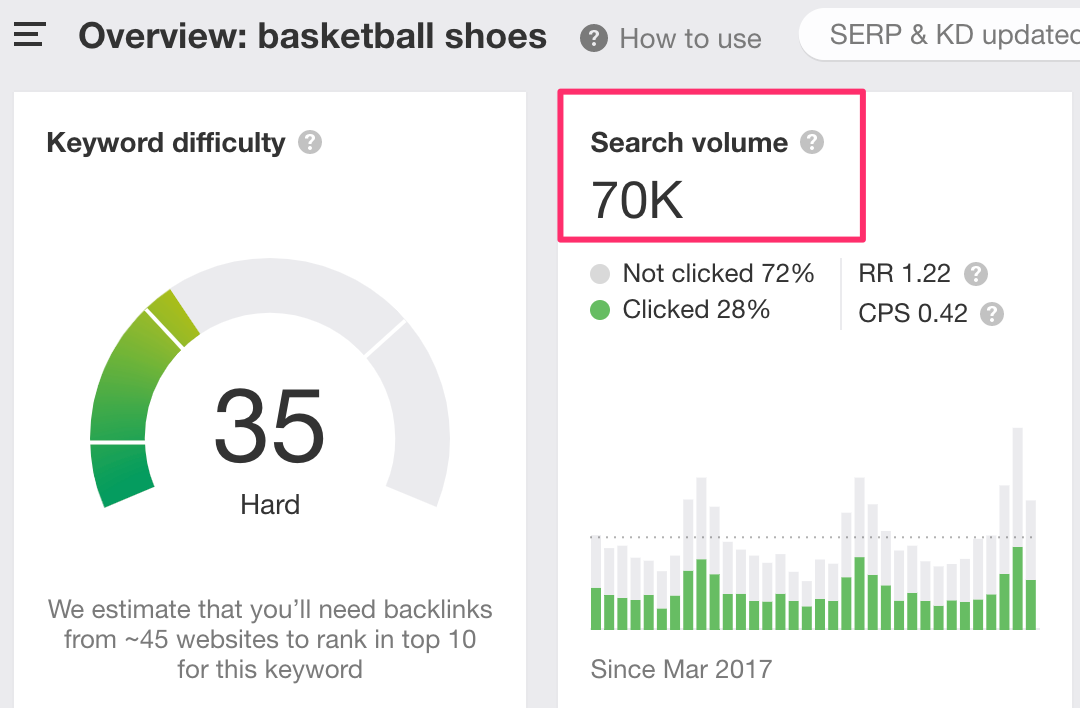
However, look at the top-ranking pages for that query, and you’ll notice they’re all category pages selling basketball shoes. It is telling that this query is a keyword with commercial intent.

Therefore, no matter how great your “basketball shoes” blog post is, you’ll never rank for this target keyword — since this is not what searchers are looking for.
To rank blog posts, you have to find keywords with informational intent. Typically, these start with terms like who, what, when, why, where, and how.
You’ll also stand a better chance of ranking if you follow the content format the search engine results page (SERPs) desire. Let’s say you want to rank for the topic “how to drive traffic to your website.”
From the keyword alone, it looks like people want a “how-to” guide, right? Unfortunately, you’ll be mistaken.
If you look at the top-ranking pages, you can see most of them are lists.
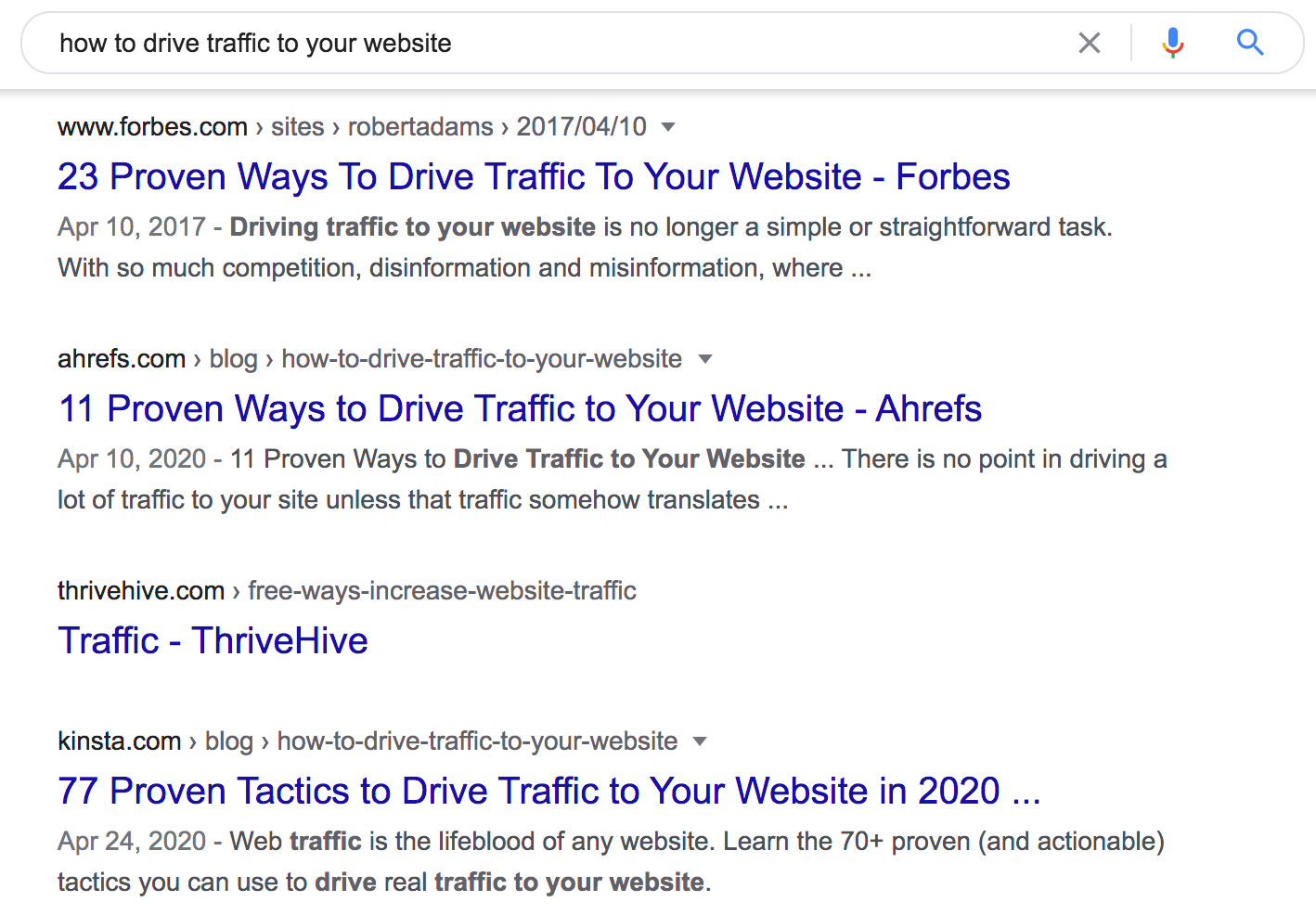
So, if you want to rank for this topic, you’ll have to create a listicle, rather than a “how-to” guide.
3. Make Sure Your Content Is Comprehensive
Not only does Google want to rank the most relevant results on the first page, but it also wants to rank the best.
Your article needs to show that it deserves a place there.
How?
By making sure your blog post covers everything searchers want to see.
Now, at this point, you might have seen a lot of advice online saying you need to create an article that’s at least 2,000 words long (or whatever length is in fashion).
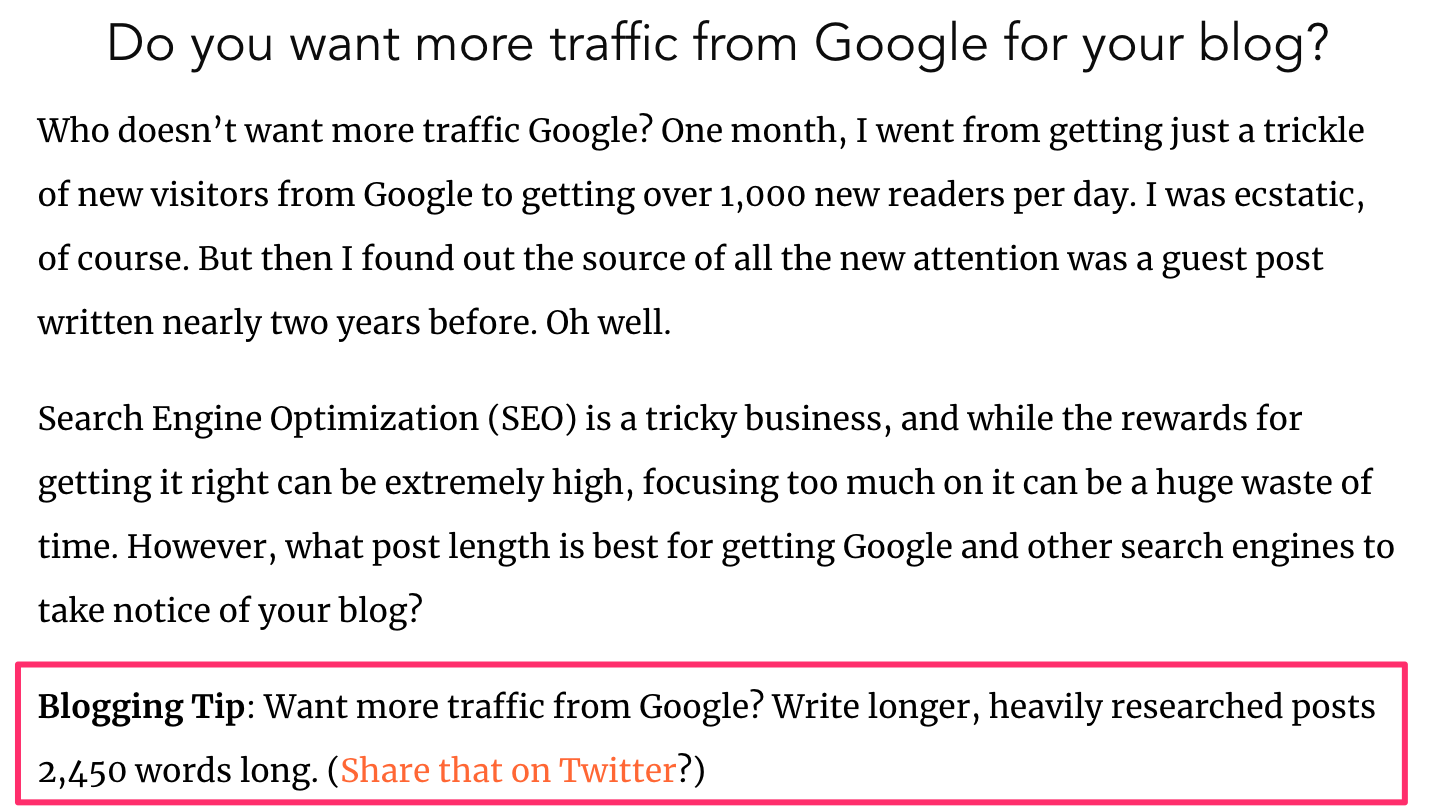
But they’ve gotten it all wrong.
The goal is not length, but depth. Your goal is comprehensiveness, not words for the sake of filling up some arbitrary length. While an in-depth post might run for a certain number of words, that’s not the outcome you’re aiming for.
How do you make sure your content is comprehensive?
Once again, the SERPs provide ideas. I mean, think about it: if Google is ranking these pages for your target keyword, it is likely they’re doing something right.
Enter your target keyword into Google and open all the top-ranking results. Go through them one by one. Review them for positives and negatives. Look for commonalities.

What is necessary for this topic? What do they all talk about?
These might offer you clues that these are subtopics searchers want to see. For example, the top-ranking pages for the topic “best french press” all contain these products:
-
Bodum Chambord
-
SterlingPro
-
Frieling Stainless Steel French Press
So you might want to consider including these products in your post too.
You can also look at other clues, like the People Also Ask (PAA) boxes:
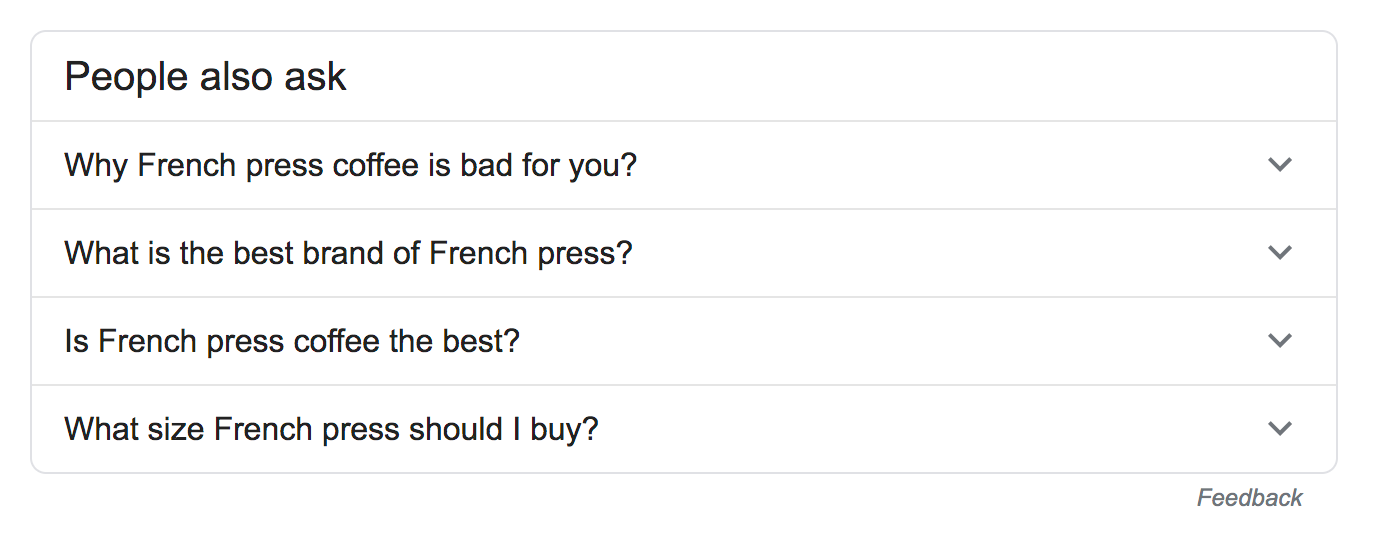
Pro Tip: You can use the tool AlsoAsked to see all related PAA questions.
Or “Searches related to” at the bottom of the SERPs.

Use these hints to make sure you’re covering the topic in full.
4. Create Something That’s Worth Linking To
Google says links are one of their top three ranking factors. So, to rank high in Google, your content needs links.[*]
How do you get links?
There are three ways to acquire them:
-
Create them
-
Earn them
-
Build them
I’ll cover link building later in the post, so let’s talk about creating or earning links.
Generally speaking, creating links (like creating a Facebook page and adding a link back to your site) offer little to no value, since anyone can do it. It’s not a valuable indicator for Google.
Let’s talk about earning links.
To earn links, your content needs to be worth linking to. This is an important point. Most people look at Tip #3 and think all they need to do is to “Frankenstein” the ideas from the top-ranking results into their own post.
But think about it. If your content is exactly like the next 10,000 other posts trying to outrank each other in the SERPs, why would someone choose your content to link to?
They wouldn’t. If you want people to link to you, you need to give them a compelling reason.
Here are some ideas to help you:
SHARE UNIQUE DATA
Who doesn’t love data that helps them understand things better? Leverage data (either in-house or collaborate with someone) to create studies.
Even if you don’t have access to data, you can easily run a survey, like Andy Crestodina does.

As you can see, this post has received a whopping 4,300 links from 1,620 unique websites.

SHARE PERSONAL EXPERIENCE
Your fitness journey will be different from mine. The way you read a book is different from me. Everyone’s experience is unique.
Don’t be afraid to add your personal take on a certain topic. Sumo does this pretty often, for example in their post on cold email templates:

CURATE KNOWLEDGE FROM EXPERTS
Don’t have the necessary experience to create a good post? Don’t worry; you don’t always have to.
Sometimes, you need to think like a journalist. What do journalists do when they lack the knowledge to write something great? They interview experts and turn it into an article.
Sumo does this often too:

5. Create A Compelling Title Tag And Meta Description
This is the title tag:

And this is the meta description:

It doesn’t matter if you rank #1 if no one clicks through to your page. To “sell” searchers into choosing yours over the rest, you’ll need a compelling title tag and meta description.
Here are some tips:
INCLUDE YOUR TARGET KEYWORDS
Adding your target keywords can improve relevance (both to Google and searchers).
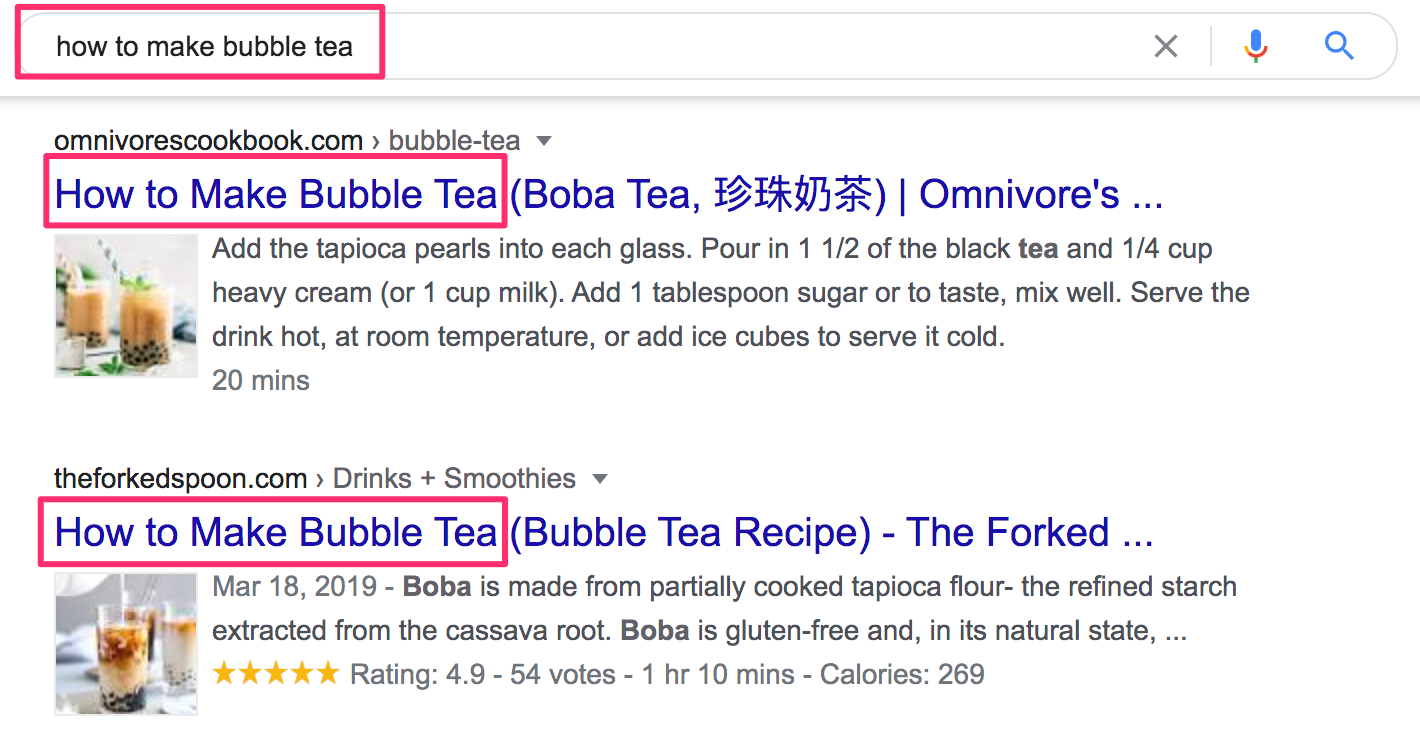
ADD POWER WORDS
Power words add emotional impact. Use this list of power words to upgrade your title tags from okay to click-worthy.
USE PROVEN FORMULAS
You don’t always have to reinvent the wheel. Use existing title tag formulas and make yours magnetic.
KEEP IT UNDER THE TRUNCATION LIMIT
Google cuts off your title tags after approximately 50 – 60 characters and meta descriptions after 155 – 160 characters. Use a tool like SERPsim to preview them and keep them under the limit.
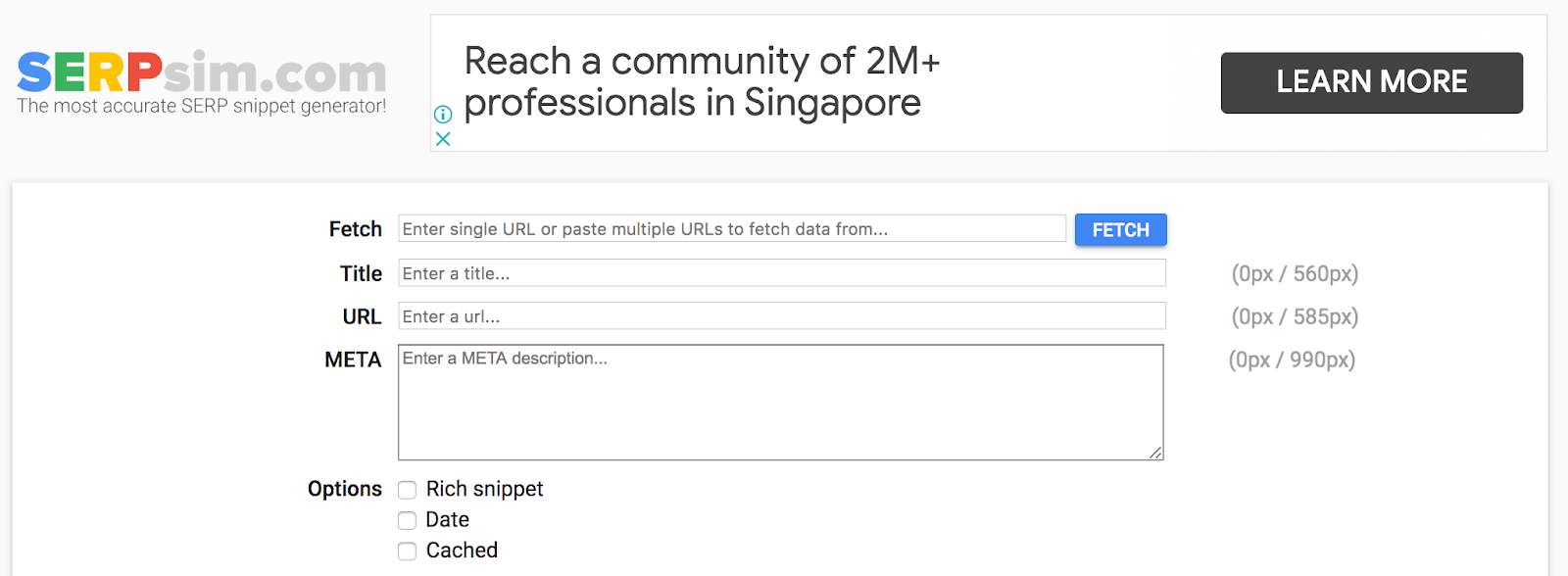
6. Add Internal Links
Ever got stuck in the “Wiki rabbit hole”? That’s because Wikipedia’s internal links keep you hooked on their site.
You should do the same too. Not only can internal links keep readers on your site, it can also boost the performance of your pages in organic search too.
Why?
This goes back to Google’s original algorithm: PageRank.[*]
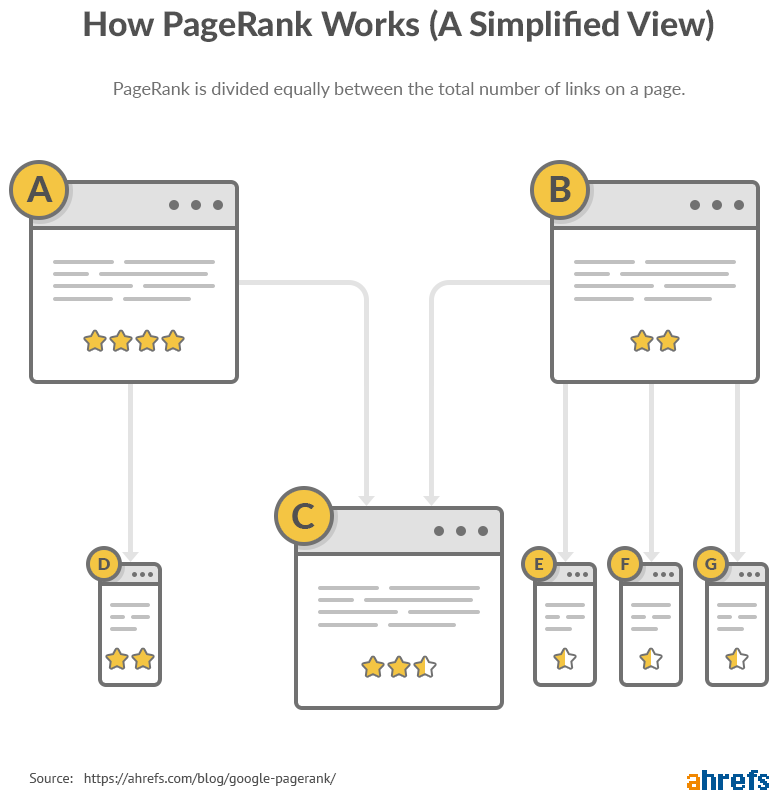
Internal links help the flow of PageRank around your site. And generally speaking, the more internal links a page has, the higher its PageRank.
Guess what? PageRank is a confirmed Google ranking factor:
https://twitter.com/methode/status/829755916895535104
Adding internal links when drafting isn’t difficult. If you’re writing in Google Docs, you can do a CMD/Ctrl + K, then search for a relevant article you’ve written before and add a link to it.

The main issue with internal linking is when bloggers don’t link from older posts to new posts. To fix this, do a site:yourdomain.com/blog + “topic” search in Google.
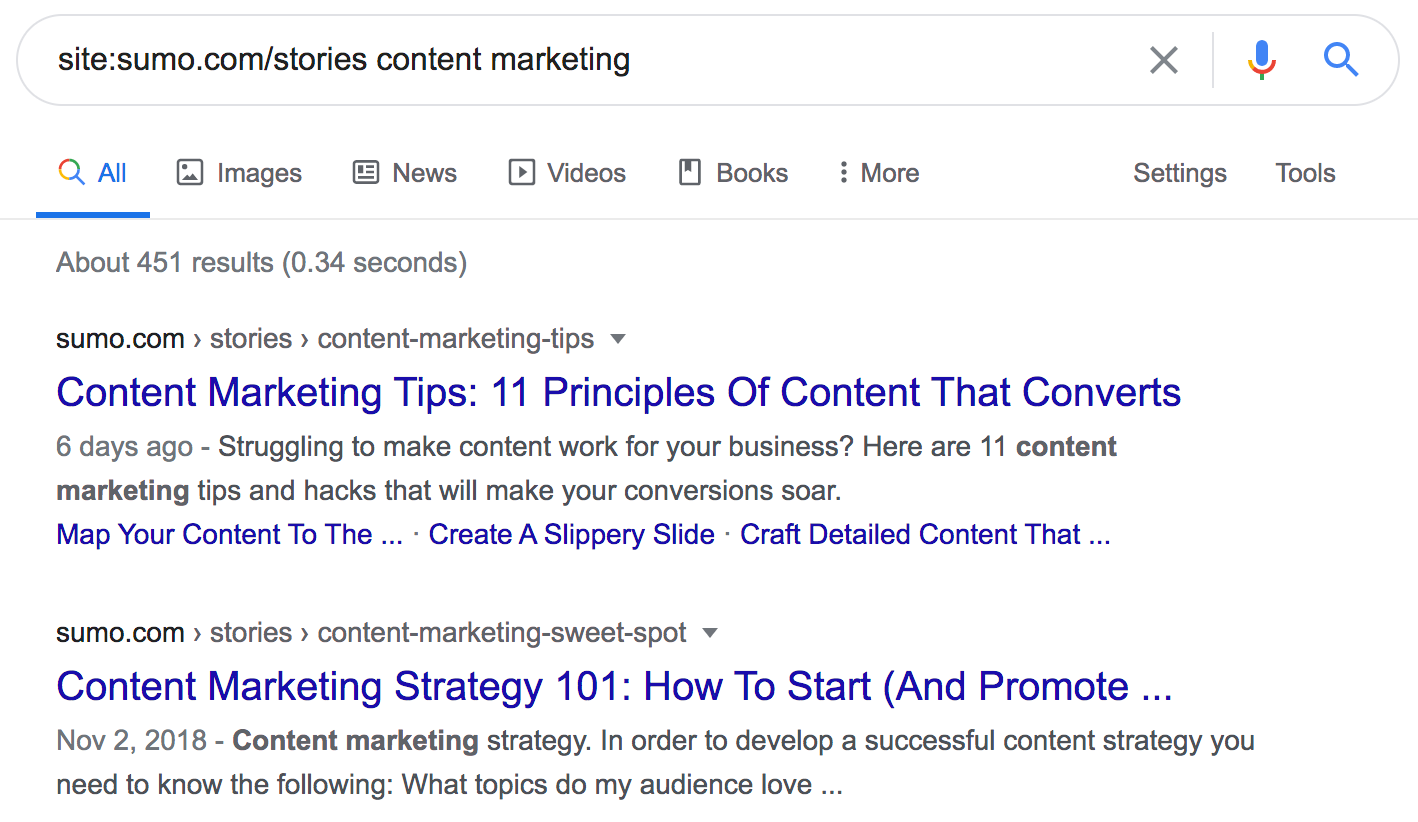
SIDENOTE. Use your blog’s URL for the “site:” search operator to do a search on your blog for relevant posts. For example, Sumo’s blog URL is sumo.com/stories.
This will pull up pages on your site about those topics.
Whenever you publish something new, do this search and then add a link to your newly published post.
7. Do Blogger Outreach
Blogger outreach is where you send personalized emails to relevant bloggers or journalists. During this process, you try to convince them to talk about your article or get them to link to you.
There are three main groups of people you can reach out to:
PEOPLE YOU’VE FEATURED IN YOUR ARTICLES
As you’re writing, you’ll inevitably link to other articles, tools, or websites.
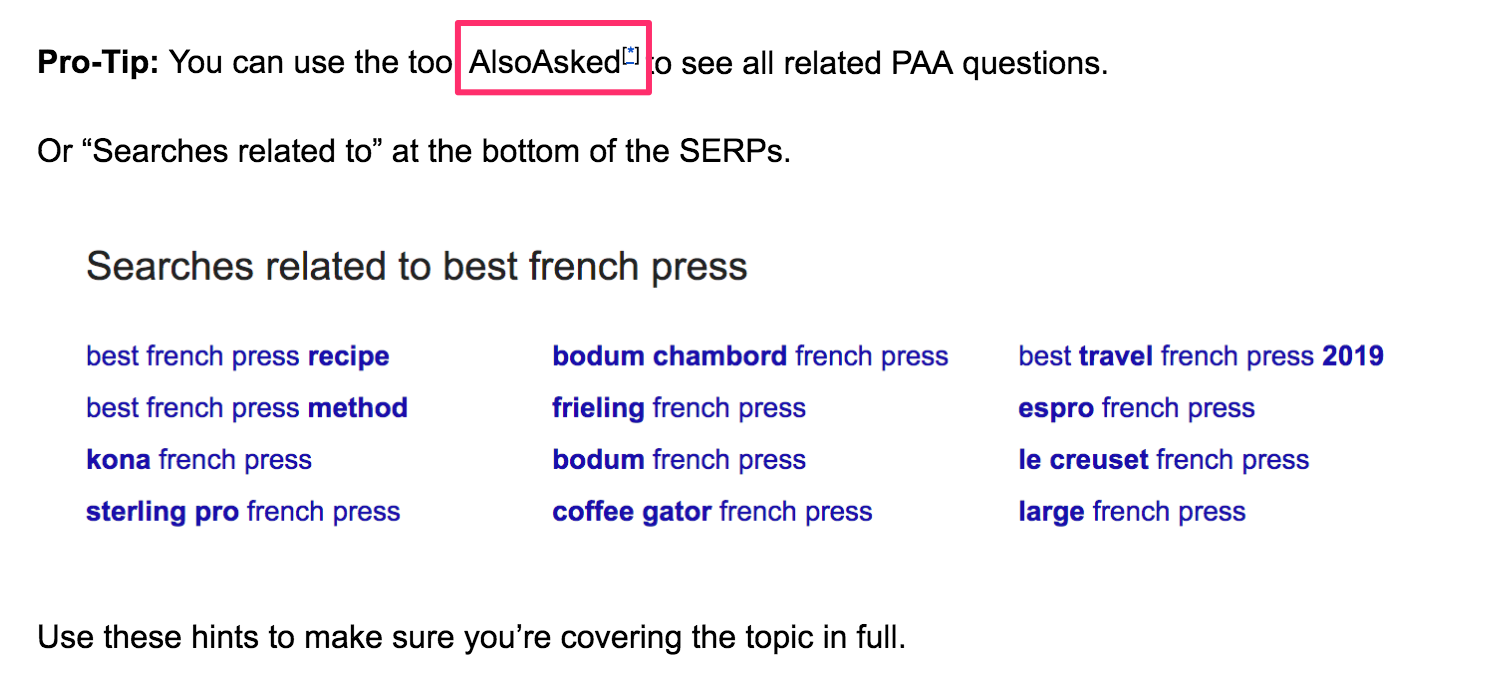
Why not reach out and let them know you’ve featured their work? I do this pretty often:
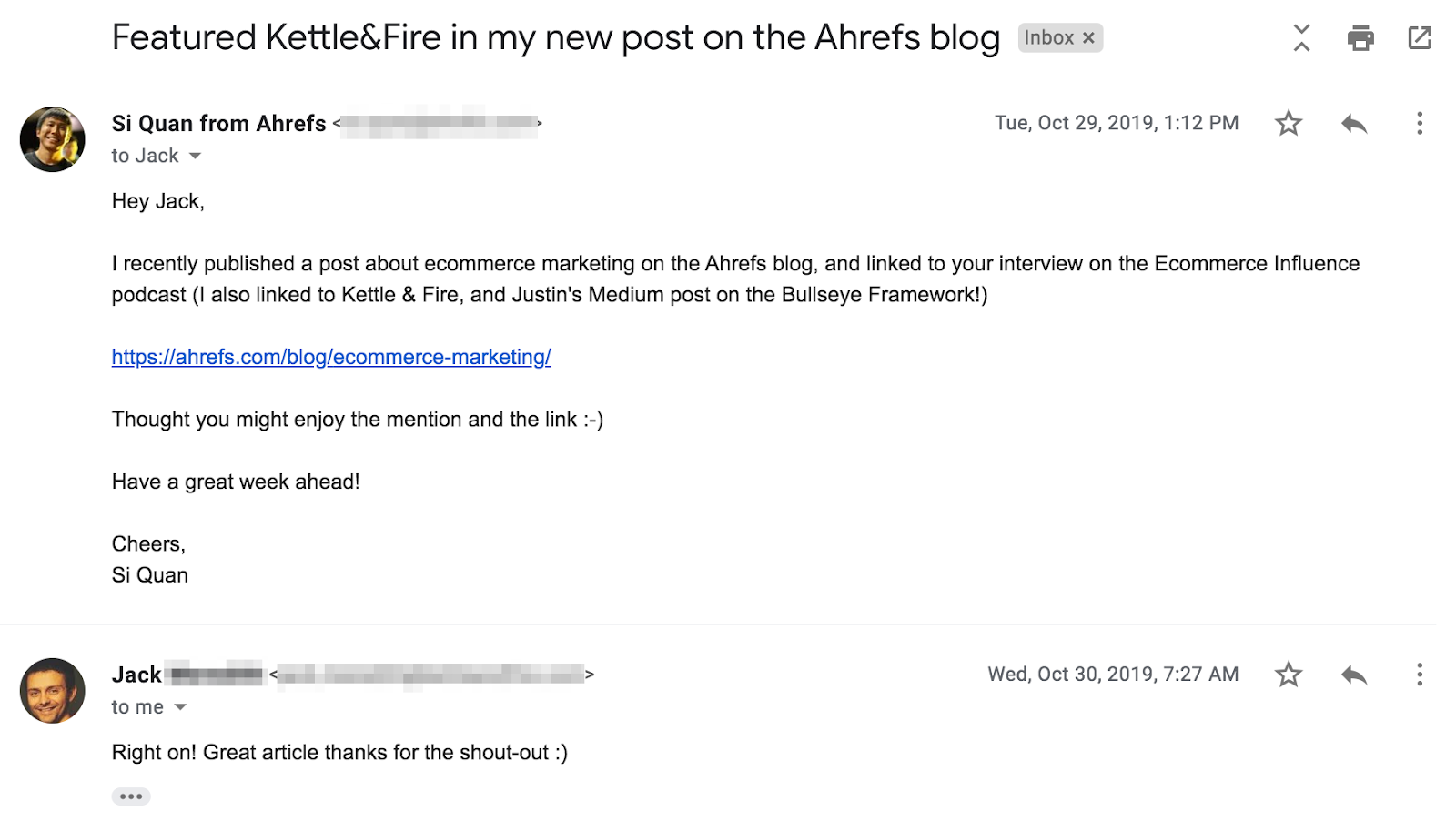
The key is not to be pushy or ask for something in return. Don’t make it quid pro quo. Just tell them nicely you’ve linked to them.
Here’s a template you can use:
Hi [First Name],
I recently published a post about [topic] on my blog, and linked to [resource].
Here’s the post: [link]
Thought you might enjoy the mention.
Let me know what you think of the post.
PEOPLE WHO’VE WRITTEN ABOUT SIMILAR TOPICS
If they’ve written about similar topics, there’s a high chance they might be interested in your content.
Think about it: someone who has recently published a post about the “keto diet” is likely to be interested in “keto diet recipes.” Makes sense, right?
To find these people, search for keywords related to your content. Then, note all the articles that appear.
For example, if I just published a post on “how to do a push up”, I might search for a similar topic like “different types of push ups.”

PEOPLE WHO’VE LINKED TO ARTICLES ON THE SAME TOPIC
Likewise, if someone has linked to an article targeting the same topic, it is likely that the site is interested in your topic.
To find these sites, you’ll have to use a backlink checking tool. Search for your target topic in Google, then take a top-ranking page and plug it into Ahrefs’ free Backlink Checker.[*]
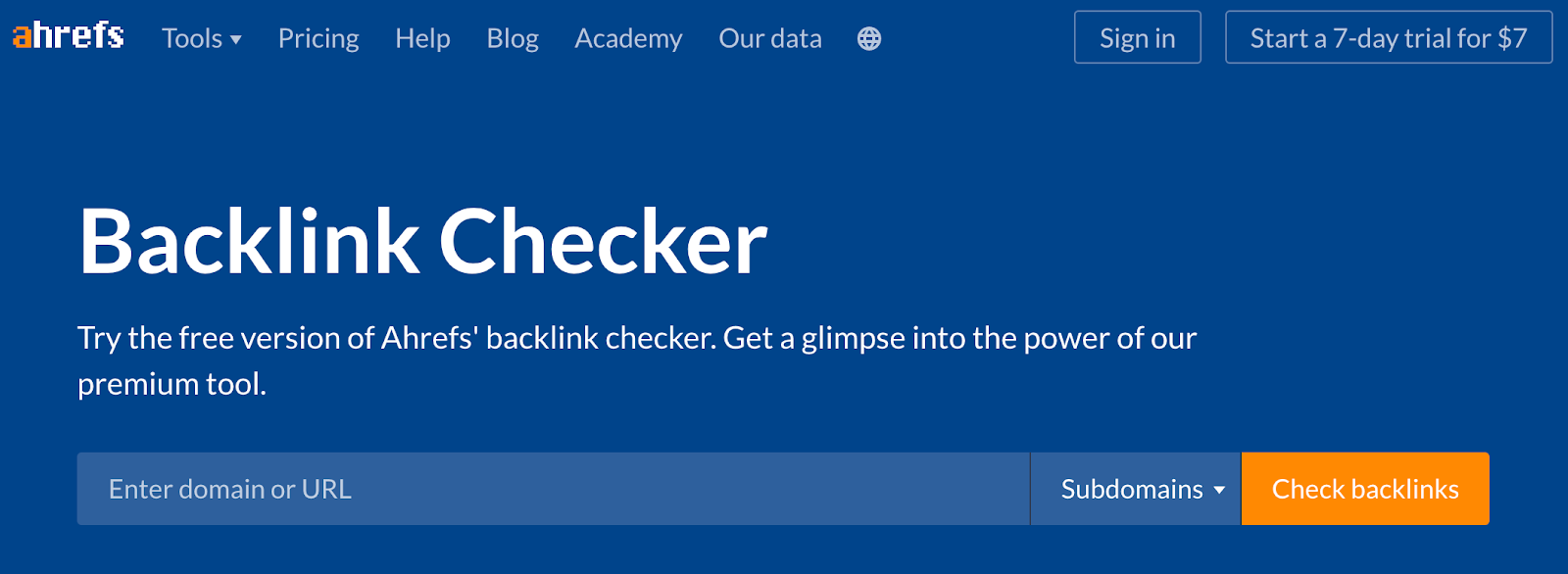
This will show the top 100 sites linking to that page.
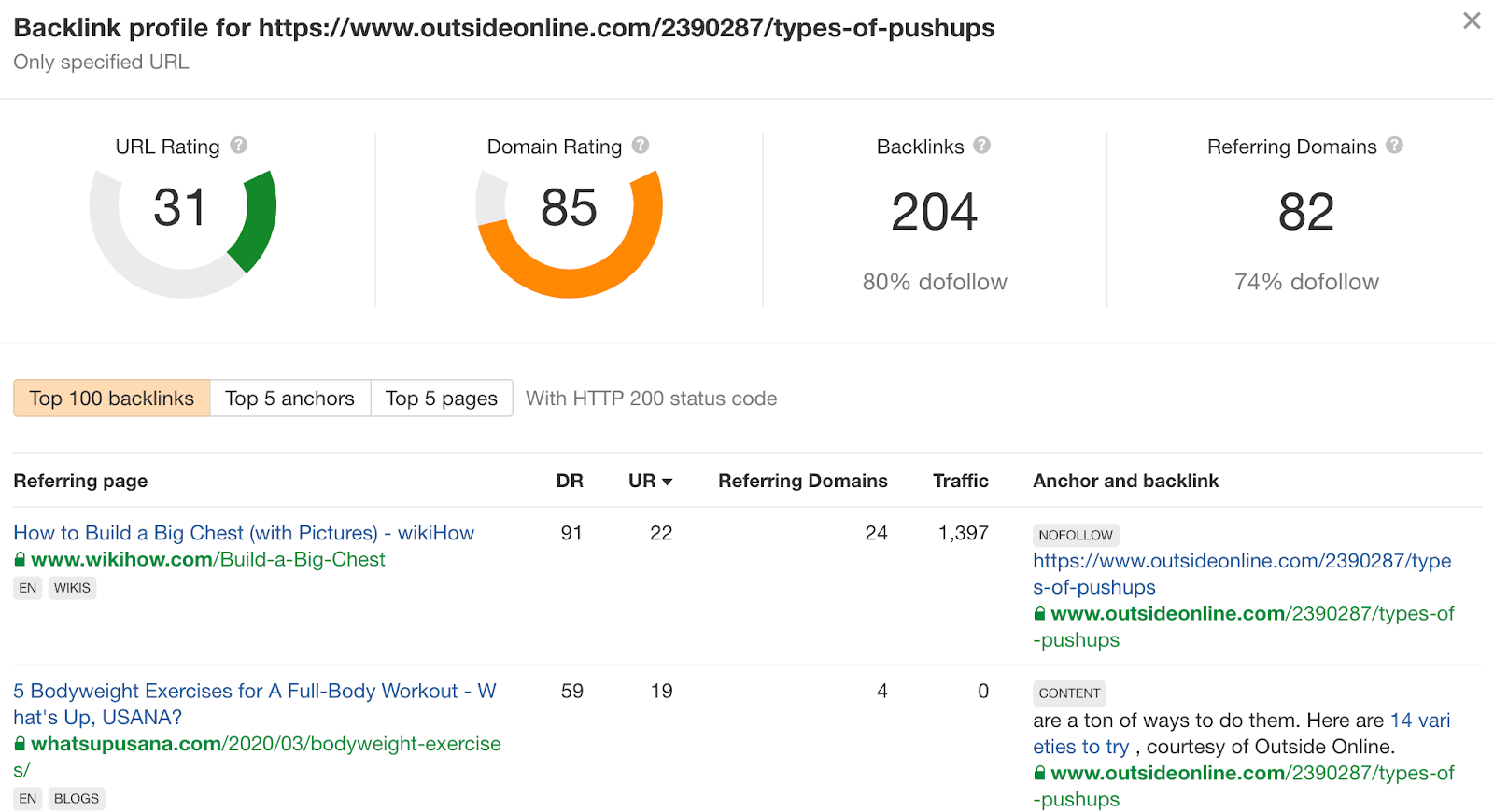
If you’re looking for more results, and you have a modest budget, use a paid backlink checker like Ahrefs’ Site Explorer.

What do you do after you’ve collected a list of prospects?
You’ll have to find their email addresses and craft personalized emails. Those tasks are blog posts on their own, so here are some resources to help you:
-
First, find the email address of the owner or managing editor of the website. The easiest way is to use an email lookup service like Hunter.io. But it doesn’t work 100% of the time, so you’ll need to run through these steps to grab the emails.
-
Next, send them a personalized email. Here are some fantastic resources from Sumo to help you with your subject lines and cold emails.
8. Build Links
As I mentioned, if you want links, you have to earn or build them. I’ve already talked about earning links, so let’s talk about building them.
There are many link building strategies around, and each one depends on a unique situation and context; it's too much to go into every detail about every type.
I’ll talk about the one strategy we’ve used successfully at Ahrefs: guest blogging.
What is guest blogging?
Guest blogging is when you write a blog post for another blog. In return for a free piece of content, the blog editor gives you access to their audience.
Most importantly, you’ll get to link to your site, which can drive referral traffic and help in ranking.
How do you know which sites to pitch?
The easiest way is to find sites that are already looking for contributors. These sites typically have a “write for us” page.
To surface these sites, you can use search operators like:
-
[your_topic] “write for us”
-
[your_topic] “contribute”
-
[your_topic] “guest post”
-
[your_topic] “guest article”
-
[your_topic] “guest post by”
-
[your_topic] “guest author”

Open these pages, and you’ll see their contributor guidelines. Follow their instructions and send them a pitch.

Now, there is a problem with this method. Since they’re so easy to find, they usually get pitched a lot. That means competition can be intense.
Another method to consider is pitching sites in your niche, even if they don’t have a “write for us” page.
Think about it: if you can create great content and offer it to them for free, why would they say no?
Finding these sites is pretty simple. If you’re active in your niche, you should already know what those authoritative sites are. Otherwise, search for relevant keywords in Google to surface sites in your niche.
To learn more about guest blogging, read Sumo’s epic guest blogging guide.
9. Repurpose Your Content
Since you’ve already spent so much time, effort, and (possibly) money to create your article, don’t let it go to waste.
Don’t simply publish and forget.
Extend its shelf life. Turn it into different formats. After all, some people prefer learning via text, while others may prefer audio or video.
For example, at Ahrefs, we regularly turn our blog posts into videos, and vice versa.
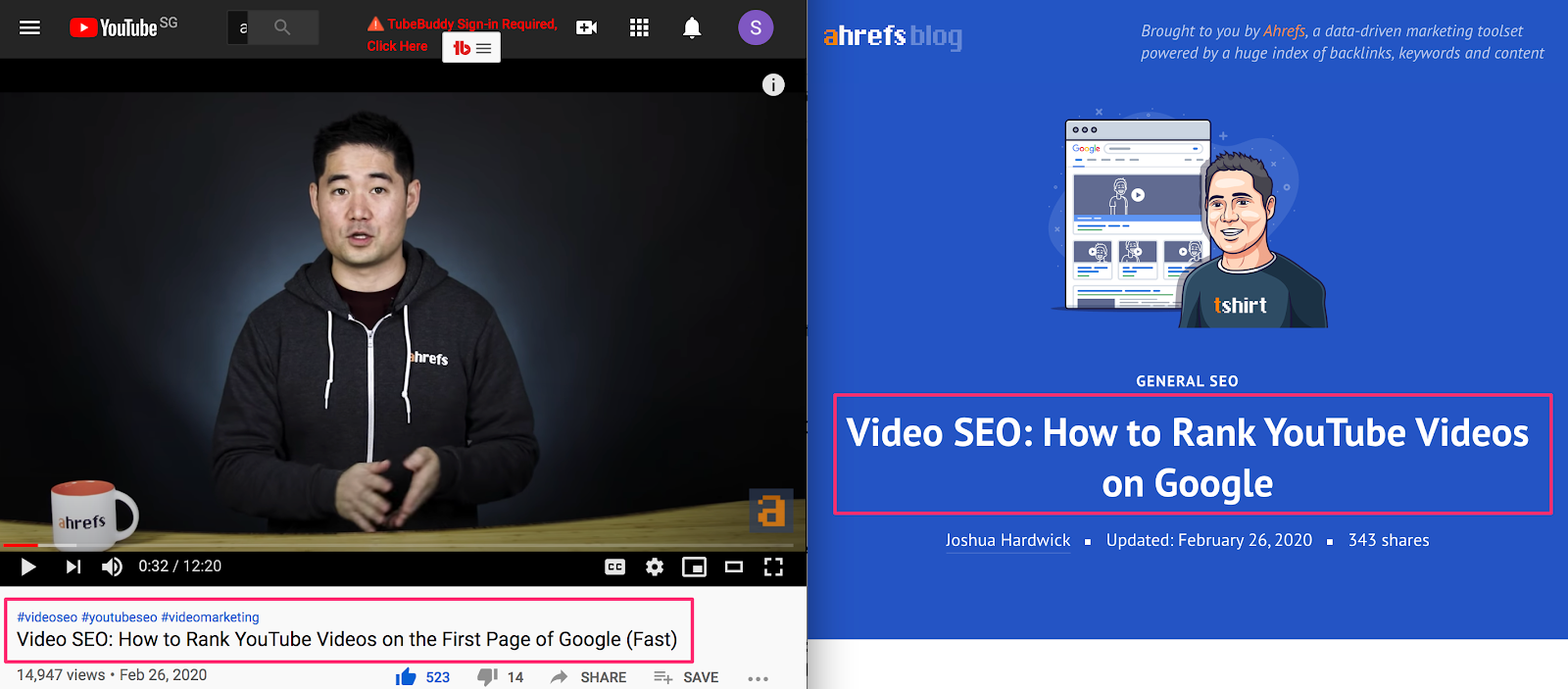
Not only are we getting tons of search traffic from Google, we’re also getting search traffic from YouTube.
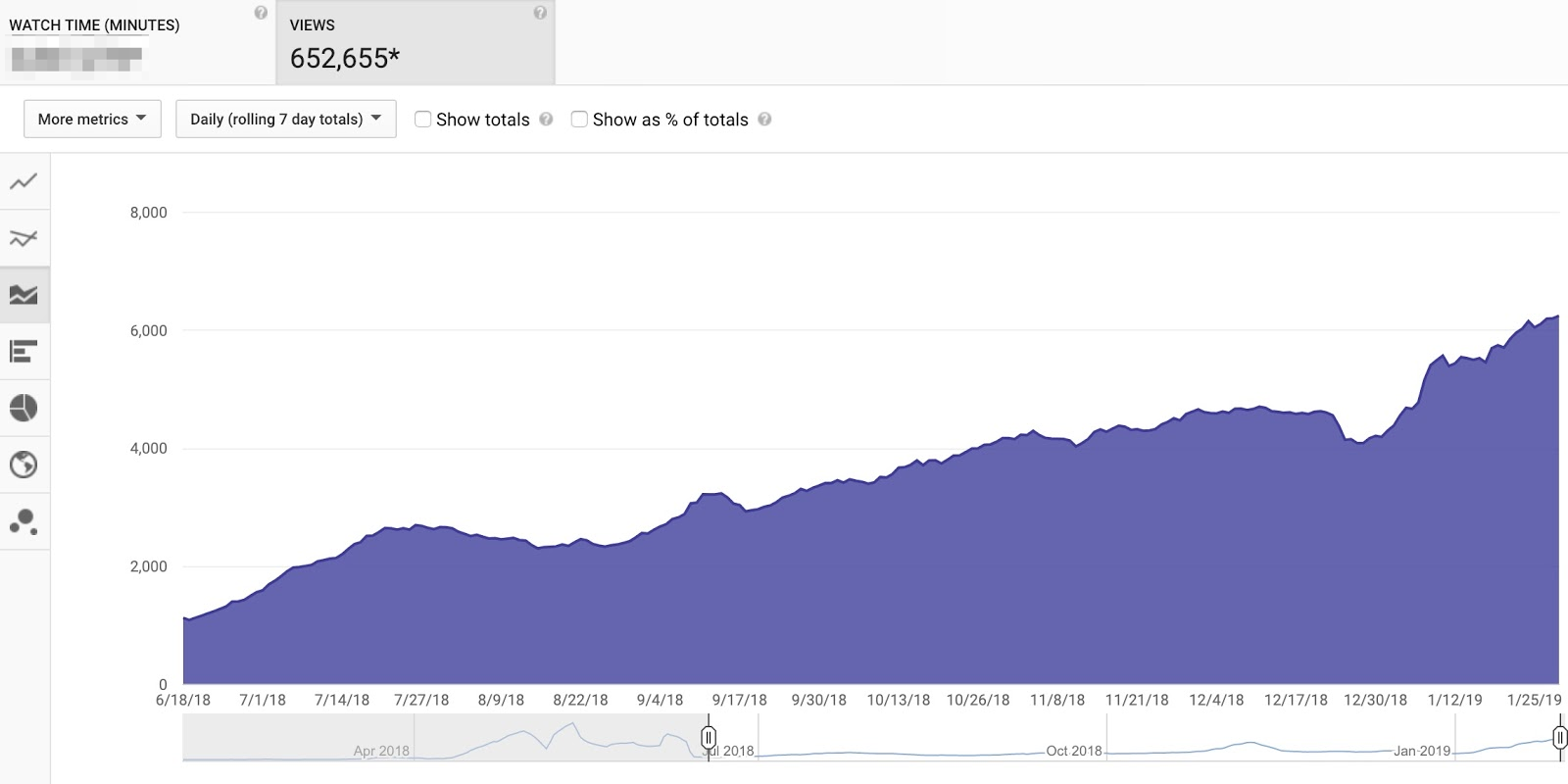
By targeting video topics that have search traffic potential, embedding them in our blog posts and promoting them to our blog audience, these videos have helped us build a large YouTube audience.

We also repurpose soundbites and images from our content for Twitter:
https://twitter.com/ahrefs/status/1257369425637933056
Since our content is usually comprehensive, we can split that article into multiple sub-articles we can pitch as guest posts. This supports our guest blogging strategy.
We call this the Splintering Technique.

For example, our post on link building is so massive that it spans multiple chapters. We could easily repurpose each chapter as a guest post idea:
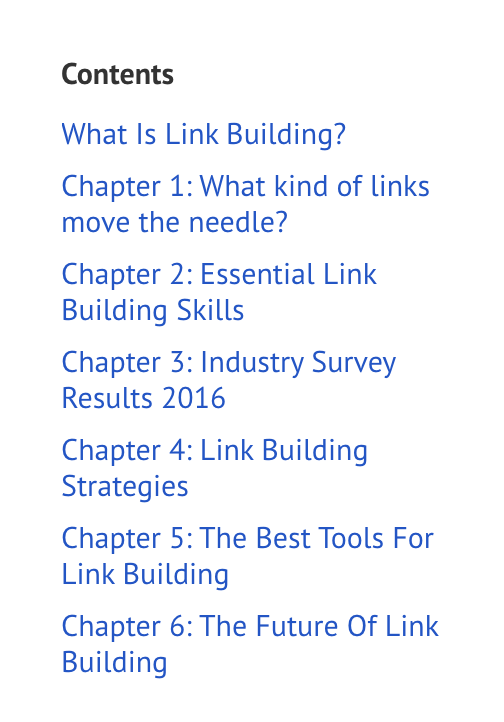
This saves us a lot of time since we don’t have to create the post from scratch.
SIDENOTE. This doesn’t mean you copy-paste the existing chapter as a new blog post. Reputable sites rarely publish duplicate content that’s already ranking on your site. So, you’ll have to change up the article.
10. Update Old Content
Not every content you create will rank on the first try. For example, our post on influencer marketing performed dismally in organic search:
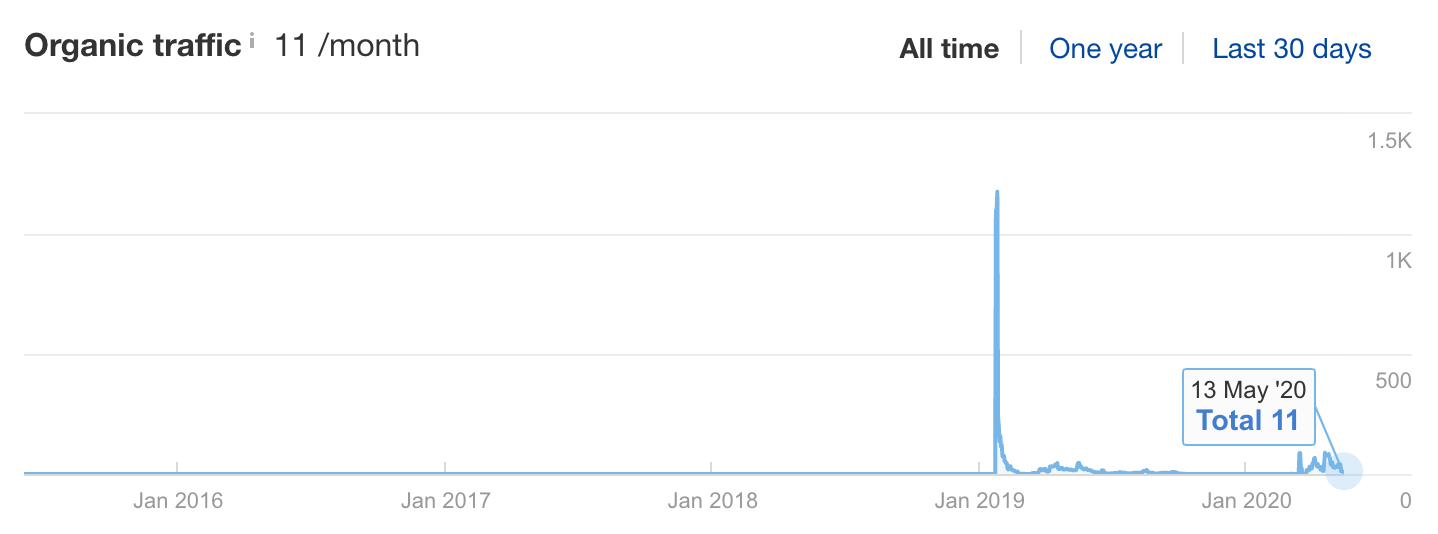
That can happen because you’ve misjudged search intent, or the topic you were targeting was too broad.
Sometimes, an article that was ranking high originally declines in traffic. When that happens, it’s usually because something about your article has become dated.
In either case, you’ll have to update your articles.
To find pages with declining traffic, look at your Google Analytics. You can also use a tool like Animalz’ Revive, which will tell you which piece of content needs updating.

To figure out why your rankings have dropped, look at the search results to see what the top-ranking posts have that you don’t.
Add those ideas into your post, and update segments that are outdated, like screenshots, data, etc. In some cases, you’ll have to rewrite the entire article.
Here’s an example of how we did it. We had a post targeting the topic “how to drive traffic to your website.” It was a how-to guide that showed how to drive traffic to different types of websites:

As discussed, this was obviously not what searchers were looking for. Searchers were looking for a list of traffic tips.
So, we rewrote the entire post from scratch:
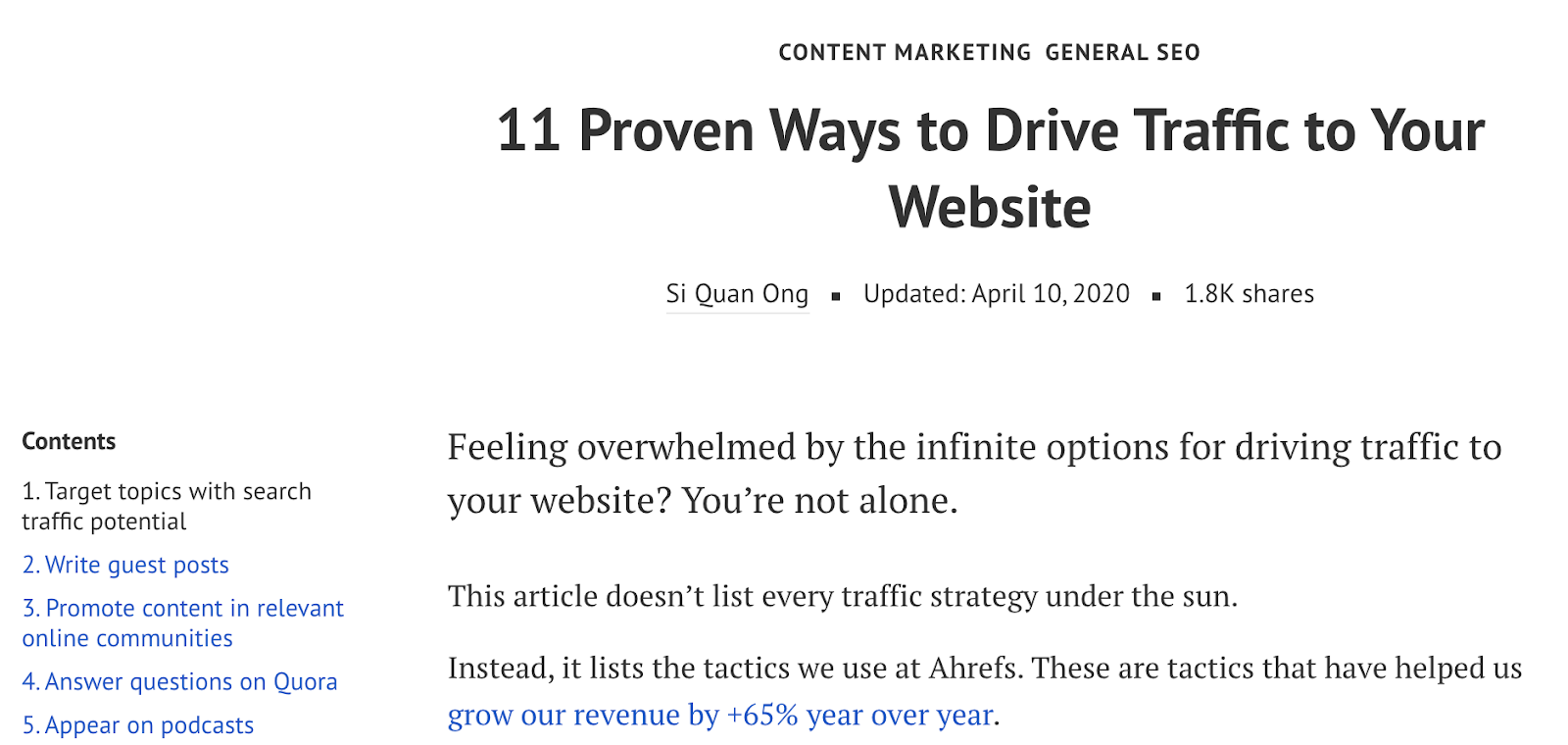
Guess what? Traffic shot up:
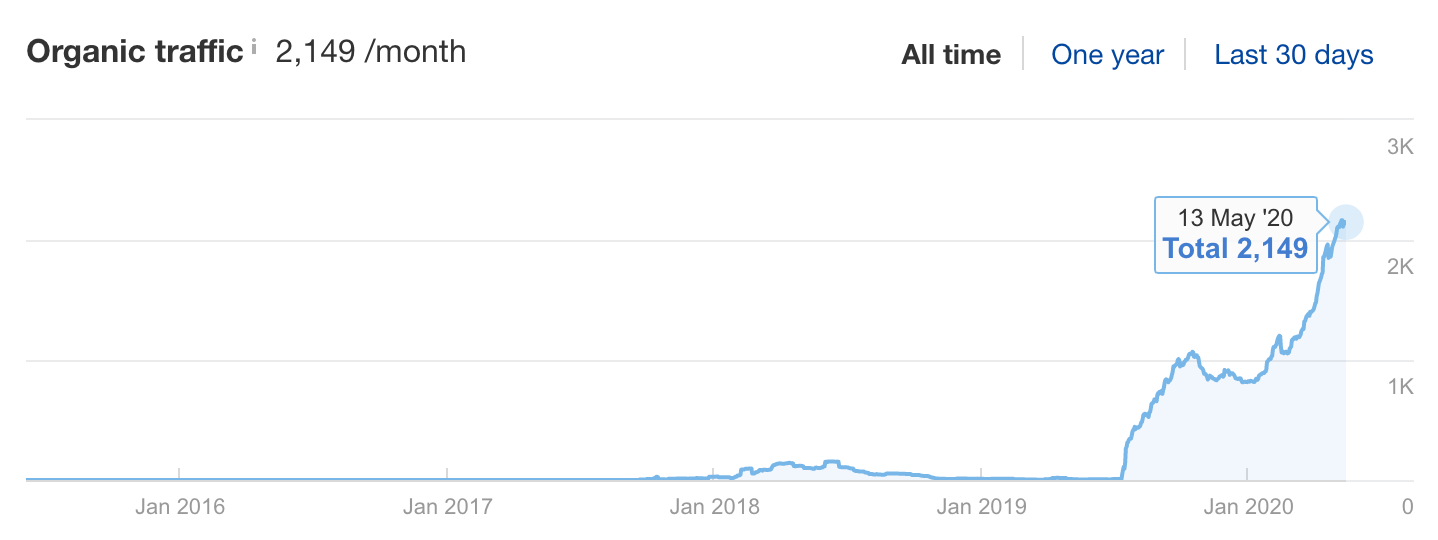
Pretty cool, right?
Start Optimizing Your Blog for Search Traffic Today
These are the exact tactics we’ve used to grow our blog from 5,000 search visits to over 400,000 search visits per month.
In other words, they work.
Choose one of them and start implementing it on your blog today. You may not see the results right away, but be patient and trust the process.
Be sure to grab the free checklist to make sure you’re implementing them with every new piece of content you create.
Click Here to Get the Blog SEO Checklist Today
Did I miss out on any blog SEO tips? Leave a comment below and let me know!
Add A Comment
VIEW THE COMMENTS